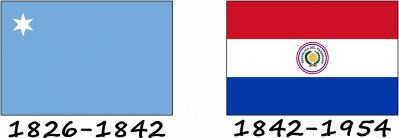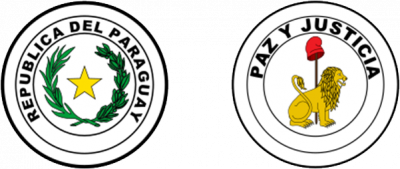In prehistoric Paraguay, the natives used various elements such as feathers, deer antlers and other elements to identify their tribe. During the political emancipation in 1811, a blue flag with a white six-pointed star was raised, which was different from the Spanish flag and symbolized the country's independence. This flag was used throughout the period of emancipation and became the forerunner of the first national emblem of Paraguay.
During the General Congress in Paraguay, which took place in 1811, a flag consisting of three horizontal stripes was raised: blue and red and yellow colors of the Spanish flag. It was used from 1811 to 1812.

The first flag of the Republic of Paraguay was red, white, and blue without the royal coat of arms. It was raised on August 15, 1812 and used until about 1826, when it was replaced by a new flag.

In 1826, Dr. Gaspar Rodriguez de Francia introduced a blue flag with a white six-pointed star by special decree. However, until 1840, this flag was used together with another tricolor, as many garrisons did not have a proper flag. Subsequently, in 1842, a decree was issued on a single tricolor, which did not allow the raising of other flags. Since then, the tricolor has not changed and is still used in this form. The only changes concerned the proportions of the flag and the coat of arms, which was placed on the central white stripe.







